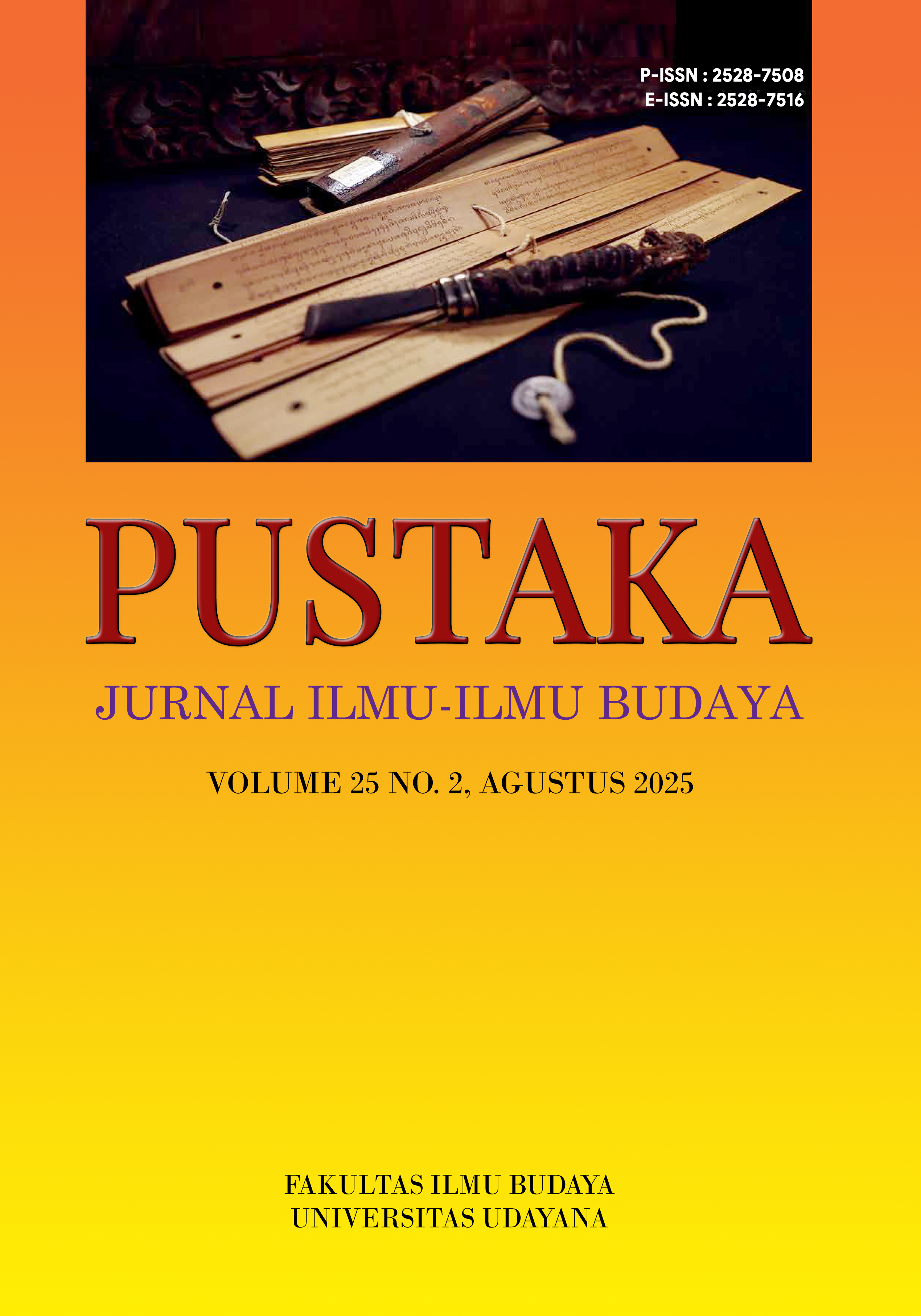Pengembangan E-Modul Interaktif Sebagai Bahan Ajar dalam Pembelajaran Bahasa Jepang di SMA Negeri 4 Singaraja
DOI:
https://doi.org/10.24843/PJIIB.2025.v25.i02.p20Abstract
This research is a Research and Development (R&D) research that aim to develop teaching materials in the form of interactive e-modules for Japanese language learning at high school level, grade XI even semester at SMA Negeri 4 Singaraja. Each theme of the product consists of video, audio, and picture learning with vocabulary, grammar, and grammar application in a contextual conversation. The development model used is ADDIE by Aldoobie (2015) which consists of Analyze, Design, Development, Implementation, and Evaluation. The Evaluation phase was limited to collecting responses to product feasibility due to time constraints. Data collection was conducted through interviews and questionnaires. To produce an optimal product, expert trials (material expert test and media expert test) and limited trials through questionnaires were conducted. Based on the results of the expert trial questionnaire, the score obtained was 100 (very feasible) from the media expert, and 97.5 (very feasible) from the material expert. Then the score obtained from the limited trial with the teacher is 98.7 (very suitable) while with the students is 100% (very suitable). Thus the interactive e-module teaching materials developed can be used as a supplement to Japanese language learning teaching materials.
References
Arthana, I.K.R., dkk. (2018). “Peningkatan kemampuan guru dalam mengembangkan media ajar berbasis videografis sebagai learning object pada sistem Garsupati bagi guru SMA dan SMK Kabupaten Buleleng”, Jurnal Widya Laksana, 7(1), pp.31–40.
Budiarta, I.K., dkk. (2023). “CLIL in the Online Micro-teaching: Factors Affecting Content and Language Achievement”, International Journal of Learning, Teaching and Educational Research, 22(2), pp.37–53. https://doi.org/10.26803/ijlter.22.2.3
Delani, A.F., dkk.. (2017). “Pengembangan media kartu asosiasi gambar “Katakana-Ina” untuk pembelajaran Katakana bagi pemula di SMA Negeri 4 Singaraja”, Jurnal Pendidikan Bahasa Jepang (JPBJ), 3(3), pp.504–514.
Ghazali, H.A. Syukur. (2000). Pemerolehan dan Pengajaran Bahasa Kedua. Jakarta: Departemen Pendidikan Nasional.
Juanda, Anda. (2016). Kurikulum dan Pembelajaran, Teori dan Praktik KTSP dari Teori Hingga implementasi Kurikulum. Cirebon: CV CONFIDENT.
Kusuma, I.P.I., dkk. (2024). “Informal Digital Learning of English to Support a Formal Speaking Course: EFL Preservice Teachers’ Perceptions and Implementation Ideas”, Turkish Online Journal of Distance Education (TOJDE), 25(4), Article 15, pp.244–251.
Launingtia, I.G.A.N. (2023). ‘Penerapan metode drill dalam meningkatkan kanji pada siswa LPK Dwipayana Cipta Karya Ubud tahun ajaran 2022’, Pustaka, 23(2), pp. 114–122.
Magdalena, I., dkk., (2023). “Pentingnya memahami karakteristik siswa sekolah dasar”, PEMBELAJAR: Jurnal Ilmu Pendidikan, Keguruan, dan Pembelajaran, 7(1), pp.1–15. https://doi.org/10.26858/pembelajar.v7i1.12019.
Manurung, S. T. B., dkk. (2023) “Analisis Minat Belajar Siswa Terhadap Pembelajaran Bahasa Jepang Kelas XI Ibb di SMA Negeri 2 Singaraja”, Innovative: Journal Of Social Science Research, 3(4), pp. 5838–5849.
Mardani, D.M.S. & Sadyana, I.W., (2022). “Educational media in Japanese language e-learning: Teacher selection/preparation and perception”, JTP - Jurnal Teknologi Pendidikan, 24(2), pp.137–147. https://doi.org/10.21009/jtp.v24i2.24220.
Menggo, S., dkk. (2023). “Insertion Function in Code-Mixing Use on WhatsApp Group Chats Among University Students”, Journal of Language Teaching and Research, 14(3), pp.587–596. https://doi.org/10.17507/jltr.1403.06
Mulyana & Sasanti. (2020). “Faktor kesulitan belajar menulis huruf hiragana pada siswa kelas X SMA Labschool Surabaya tahun ajaran 2019/2020”, HIKARI UNESA, 4(1).
Rafli, Zainal. 2015. Teori Pembelajaran Bahasa. Yogyakarta: Garudhawaca.
Sugihartini, Nyoman & Jayanta, Nyoman Laba. 2017. “Pengembangan E-Modul Mata Kuliah Strategi Pembelajaran", Jurnal Pendidikan Teknologi dan Kejuruan. Volume 14, Nomor 2 (hlm 222-230).
Yeni, Y., Suartini, N.N., Sadyana, I.W. & Hermawan, G.S., 2020. “Pembelajaran Kaiwa Berbasis JFS Can-Do”, Jurnal Pendidikan Bahasa Jepang (JPBJ), 6(1), pp.124–131.

